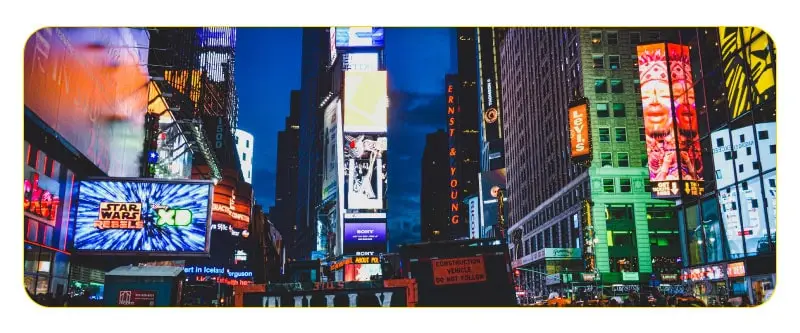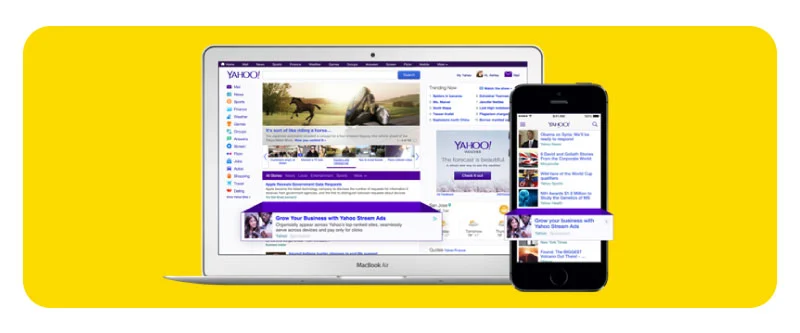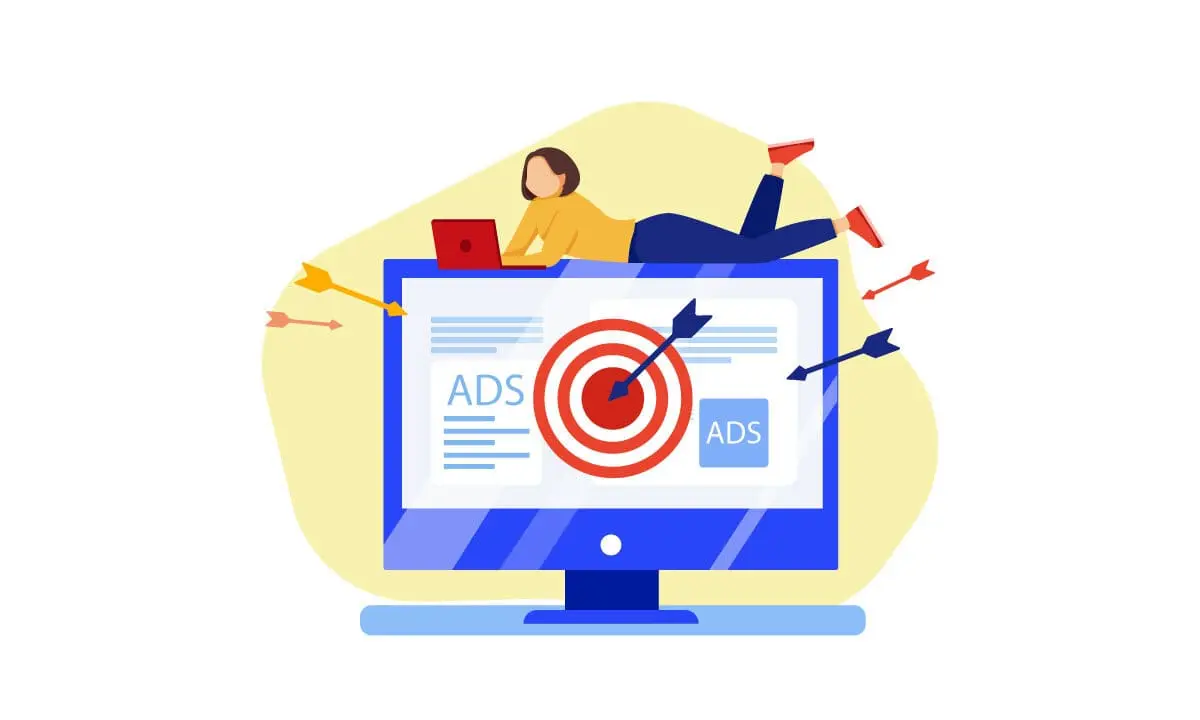The marketing world has to face it. Here in the year 2024, people are elusive toward advertising more than they have ever been. And it makes sense. Try to think of it as a recipient instead of a marketer. The world is full of ads. Anywhere you look, from streets and public places to social networks and websites, countless different brands try to sell you something. The pushier and more aggressive they are, the more annoying it gets. Ads are disruptive in their nature.
To counter this animosity toward ads, marketers have developed unobtrusive ways of advertising to avoid disturbing the viewer. This has led to multiple forms of ads and promotional content that succeed in grabbing people’s attention without annoying them. Two of the most important between them are native advertising and branded content. However, it’s very common to mistake these two, since they’re [wrongfully] used interchangeably by many marketers. Understanding their difference will help you pick the one that fits your brand and benefit from them in the best possible way.

What’s native advertising?
Let’s start with the one you’ve probably heard more about: Native Advertising.
Native is a paid promotion form that focuses on minimizing the aforementioned adverse effect of ads. To reach this goal, native ads mimic the look and feel of their surrounding organic content. The objective here is to have little impact on the user’s experience. Native ads are designed to match the visual language, function, and tone of the place they’re being served on. As a result, people tend to be kinder to them and don’t dismiss them just as easily as they ignore traditional ads.
Native advertising has been very successful in preventing ad fatigue, and the method is already very popular in the marketing world. The classic example of a native ad is an advertorial, which is an advertisement in print media that appears as an editorial article. Native ads usually try to bring value by addressing a common problem of the target audience and providing the advertiser’s product or service as a solution.

While this type of advertising feels a bit deceitful, it’s actually not that duplicitous because government authorities like the Federal Trade Commission (FTC) oblige businesses to tell viewers that they’re seeing ads. That’s why there’s always a small phrase or tag on the native ads’ widgets that indicates they’re Sponsored Content or Paid Promotions. Publications and advertising channels charge brands for running native ads based on cost-per-click (CPC) or cost-per-mille (Cost per 1000 impressions).
Native ads have many formats since they basically imitate the shapes of the other content on their publication platforms. This means they could be photos, videos, infographics, podcasts, articles, and blog posts. A very good example is Google’s paid search channel. The paid results you see on the search engine result pages (SERPs) look exactly like other normal links, except they have a tiny Ads indicator below them. However, the diversity of native ad formats could lead to confusion, since they can overlap with other ad types.
An important aspect of native ads is the place they are served. Native advertising is done on third-party outlets and platforms.
What’s branded content?
Branded content is relatively newer than native advertising in this landscape. It’s produced in-house and is designed to convey brand values with engaging, valuable, and informative content. Storytelling plays a major role in branded content. Unlike other types of ads that mainly focus on product promotion and driving sales, branded content might not even mention the product.
The ultimate goal of branded content is to establish a strong connection with the audience and foster affinity. Branded content is often fun, helpful, and touching, with a high chance of going viral across the internet. Producing this content requires a noticeably larger investment than native ads, but they save the cost of third-party publications since they’re mainly placed on the advertiser’s own channels.
Creating and publishing content that resonates with people and impacts them on a deep emotional level is one of the distinct characteristics of branded content and content marketing in general. You’re not simply shouting your brand’s name into people’s faces. You make a commitment and spend a lot of time, energy, and resources to add something to their knowledge or entertain them. I find this quote from Doug Kessler (co-founder of Velocity Partners) very enlightening:
Traditional marketing talks at people. Content marketing talks with them.
Doug Kessler

A great example of branded content is Dove’s famous “You’re More Beautiful Than You Think” video, published on the brand’s YouTube channel in 2013. This very touching and impactful video featured an artist who drew a number of women based on their own descriptions of how they looked. After that, the artist did the same thing again, this time based on a stranger’s descriptions. This video garnered 50 million views in less than two weeks. Dove’s brand is not directly mentioned in the video at all, and all the focus is deeply connecting with female audiences by talking about a subject that’s important to Dove’s potential clients, and relevant to Dove’s line of work.
Native advertising vs branded content
As previously mentioned, these two terms are often used interchangeably, whereas there are substantial differences between them. The core difference is the message they send and the way they approach the audience. Both native and branded content don’t look like ads, but native ads still come across as salesy and their ulterior motive is generating leads and driving sales. On the other hand, branded content is focused on storytelling, building trust and affinity, and generating brand awareness. It aims to boost the brand’s credibility in the eyes of customers by entertaining or educating them, rather than indirectly leading them to purchase a product or sign up for a subscription.

Another distinction between the two is where they are served. Native ads are handed to third-party channels like publications, print media, or social networks, whereas branded content mainly appears on a brand’s self-owned channel like a website or YouTube account. Virality and shareability are important aspects of branded content, while native ads usually don’t get massively popular across the internet. Keep in mind that although branded content is usually published on a brand’s own hub, it may also be handed to a third-party publisher, in which case it’s regarded as a native ad. I know. It’s a bit tricky. Let’s say it like this: Branded content can be a native ad (if it’s posted on a third-party channel), but not all native ads are branded content.
Here’s a very good example: The shoe company Allbirds collaborated with The New York Times for an advertorial article about how birds are such vital creatures in the environment. This advertorial is one of the most impressive native advertising examples and not branded content. Even though it’s heavily focused on spreading information and educating the audience instead of promoting a brand, it’s still published on a third-party website as a normal post and thus considered a native ad.
Finding the Right Fit
In the dynamic realm of modern marketing, the decision between native advertising and branded content holds the potential to shape the success of a campaign. The route chosen should be intricately tied to the campaign’s objectives and the pulse of the intended audience. This juncture is where the art of strategic decision-making truly shines, as each approach brings its unique strengths to the table.
The Balancing Act: Native Advertising vs. Branded Content
At its core, the choice between native advertising and branded content hinges on a careful balance between seamlessly fitting into the consumer experience and authentically reflecting the brand identity. Native advertising, like a chameleon, blends harmoniously with the surrounding content, almost camouflaging itself as an integral part of the platform. On the other hand, branded content steps boldly onto the stage, taking the spotlight with a focus on storytelling that echoes the brand’s values.
Tailoring for Success: Context and Audience
Understanding the context in which the message will be received is pivotal. Native advertising thrives in contexts where consumers are navigating through content, subtly absorbing information without resistance. Industries such as lifestyle, fashion, and travel often find native advertising to be a natural extension of the user experience. Consider a travel blog seamlessly weaving in a hotel’s features within an article – an unobtrusive yet compelling way to showcase what the brand has to offer.
Meanwhile, branded content flourishes when storytelling becomes the medium of communication. Sectors like tech, finance, and healthcare can harness the potential of branded content to dive deep into intricate narratives that resonate with their audience. Imagine a technology company sharing a behind-the-scenes journey of product development – a testament to the brand’s innovation and commitment.
Setting the North Star: Desired Outcomes
When it comes to decision-making, the North Star remains the desired outcomes of the campaign. Native advertising excels in driving immediate engagement, seamlessly guiding the audience to explore without interrupting their content consumption. In contrast, branded content, by design, forges a lasting connection with the audience. It crafts an emotional journey, fostering brand loyalty over time. It’s akin to building a bridge – native advertising facilitates the crossing, while branded content builds the lasting path.
Guiding the Path: Making the Choice
In the end, the path to tread is shaped by the harmony between objectives, context, and audience. The choice is not merely a binary one; it’s a dynamic interplay that requires careful orchestration. As marketers, your canvas is diverse, and your audience is discerning. Native advertising and branded content are the brushstrokes, each lending its texture to your narrative masterpiece.
So, delve into your campaign objectives, understand your audience’s rhythms, and craft your marketing symphony with wisdom. Whether it’s the seamless integration of native advertising or the soul-stirring tales of branded content, the right fit awaits – a fit that elevates your brand’s resonance and fuels your journey towards marketing excellence.
Conclusion
There you go. Here are the main differences between native advertising and branded content. Now you should have a good understanding that which one best suits your brand. Many businesses tend to utilize a mixture of the two to both sell their products (without facing ad fatigue), and establish a strong connection with their audience. You need to fully understand what your goal is and whether you have the appropriate budget, resources, and creativity or not.
FAQs
What is branded content also called native advertising or content marketing?
Branded content is a form of content that’s focused on storytelling and engaging with an audience. The goal is to establish a deep connection with customers and entertain or educate them with fun or helpful content. Branded content is usually published on a brand’s own channel, but some brands also pay third-party channels to publish their branded content for them, in which case, it is regarded as a form of native advertising.
What is the difference between native ads and branded content?
Native ads are more salesy and are distributed in a third-party publication while mimicking the look and feel of other organic content of the channel. Branded content on the other hand is produced in-house and is mainly posted on a brand’s own channel. This content is more about storytelling and connecting with prospects on an emotional level, rather than generating leads and making sales. They also may be published on a third-party channel.







 Facebook Ads Spy Tool
Facebook Ads Spy Tool TikTok Ads Spy Tool
TikTok Ads Spy Tool
6 thoughts on “Native Advertising Vs Branded Content: What’s The Difference?”
hi there i think native advertising and branded content are not synonymous, although in popular marketing culture it may seem.
Languages are changing the way we use, talk and think about digital marketing. The RAE campaign and the advertising academy have already said it: English lends itself to confusion. And if this has happened in a television campaign… what about terms like branded content and native ads?
Hi there Nicolas. That’s right. Native ads and branded content are not the same. The difference in tones and serving platforms separates these two.
As I read the article I had trouble understanding the concept of a branded content. In your definition you refer to it as content that publish directly from the brands page itself. But facebook and tiktok refer to this as content that are published by a third party creator but funded by the brand itself. Is this a contradiction?
hi Jared
No this is merely a conceptual development. A branded content is a special tool for businesses that allows them publish marketing contents. But with the advent of content creators this was simpler to be outsourced to a third part and being funded by the business.
Many times we have heard the phrase “it all depends on how and for what you do it”. Well, this applies in this versus. Native advertising seeks impact and for that it adapts to what is done in advertising: attract attention. Branded content, on the other hand, aims to establish a brand relationship based on the content.
Hi Josef
Branded content focuses heavily on adding value to customers and establish a strong emotional connection with them, whereas native advertising is more similar to traditional ads and contains much more marketing-ish content.